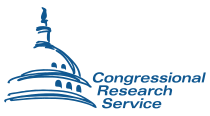The Work of Child Welfare Agencies
Children depend on adults—usually their parents—to protect and support them. The broadest mission of public child welfare agencies is to strengthen families so that children can depend on their parents to provide them with a safe and loving home. More specifically, child welfare agencies aim to prevent abuse or neglect of children in their homes. If this has already happened, the agencies are expected to offer aid, services, or referrals to ensure children do not re-experience maltreatment. For some children, this means placement in foster care.
Foster care is understood to be a temporary living situation. When a child enters care, the first task of the child welfare agency is to provide services to enable the child to safely reunite with family. If that is not possible, then the agency works to find a new permanent adoptive or guardianship family for the child. Youth in care who are neither reunited nor placed with a new permanent family are typically emancipated at their state’s legal age of majority. These youth are said to have aged out of care.
Children Served
During FY2022, public child protection agencies screened allegations of abuse or neglect involving 7.5 million children, and carried out investigations or other child protective services (CPS) responses involving 3.1 million of those children. Among the children receiving services after a CPS response, most (roughly 84%) received them in their own home.
Some children are removed from their homes following an investigation; roughly 187,000 children formally entered foster care during FY2022, the only time in more than 20 years of regularly reported data that the number of entries was less than 200,000. Neglect and/or parental drug abuse are the circumstances most often associated with foster care entry. Among the 369,000 children in foster care on the last day of FY2022, most (83%) lived with families (nonrelative or relative foster family homes and pre-adoptive homes), 9% lived in a congregate setting, 7% were on trial home visits or in supervised independent living, and 1% had run away.
Of the 201,000 children who formally left foster care during FY2022, just over half returned to their parents or went to live informally with a relative (51%), while 38% left care for a new permanent family via adoption or legal guardianship. At the same time, 9% aged out of care, while most of the remainder (1%) were transferred to the care of another agency.
Who Bears Public Responsibility for This Work?
Under the U.S. Constitution, states are considered to bear the primary public responsibility for ensuring the well-being of children and their families. Public child welfare agencies at the state and local levels work with an array of private and public entities—including the courts and social service, health, mental health, education, and law enforcement agencies—to carry out child welfare activities. This work is done consistent with state laws and policies. At the same time the federal government has long provided technical support and funding that is intended to improve state child welfare work. As part of accepting this funding, states must agree to meet certain federal program rules, such as required permanency planning for all children in foster care. Compliance with these child welfare requirements is monitored via federal plan approvals, audits, and reviews.
The Children’s Bureau within the U.S. Department of Health and Human Services (HHS) administers most federal child welfare programs. State-level administration may be housed in the state human services department or at an independent, state-level child and family services agency. Some states have county-administered programs supervised by the state agency.
Child Welfare Spending and Programs
State child welfare agencies spent about $31.4 billion on child welfare purposes during state FY2020, according to a survey by researchers at Child Trends. Most of that spending drew from state and local coffers (51%). Of the remainder, 30% was supplied by federal child welfare programs included in the Social Security Act; 18% was from other federal programs, most of which are not solely child welfare-focused (principally, the Social Services Block Grant and Temporary Assistance for Needy Families); and less than 1% was from offsets and from private and inkind support. For FY2024, about $11.0 billion is provided for federal programs dedicated wholly to child welfare.

